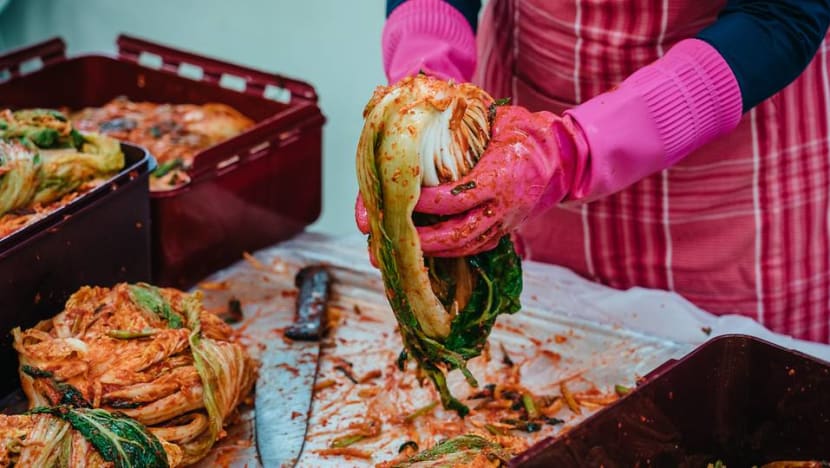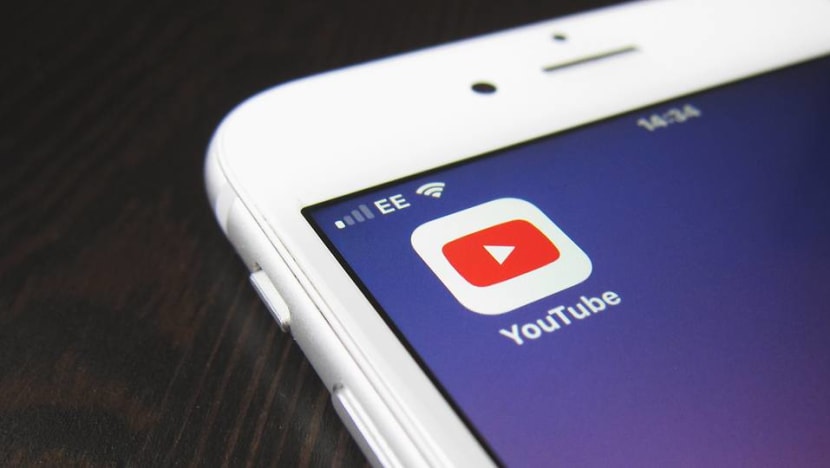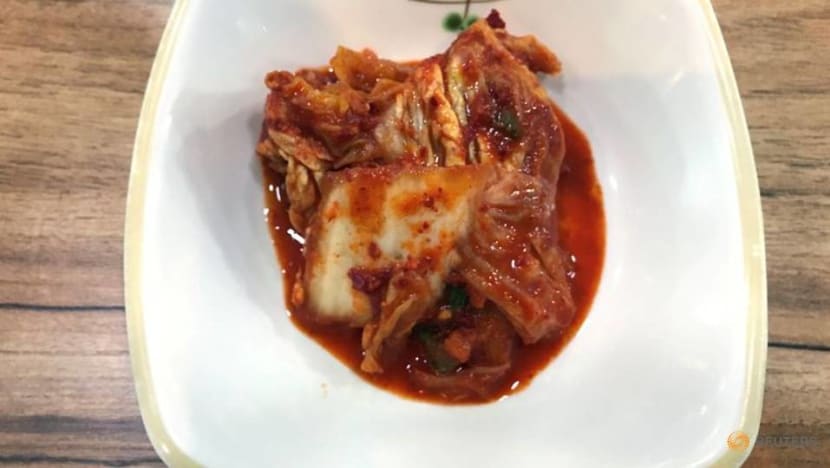commentary Commentary
Commentary: Kimchi controversies and culture wars: What’s South Korea’s and China’s beef?
A Mukbang star got herself into a pickle with Chinese and South Korean netizens – over the origins of kimchi. But a larger food fight has been brewing for some time, says Steven Borowiec.

A participant makes kimchi during the Kimjang Festival in Goesan county in South Korea on Nov. 7, 2020. (Photo: Jun Michael Park/The New York Times)
SEOUL: Hamzy, a South Korean YouTube personality, has amassed more than 5.3 million subscribers by posting videos of herself eating.
A recent YouTube video starts with her unboxing a delivery of fried chicken smeared in multicoloured sauces.
Throughout much of the video, there is little audio besides her breathing, biting and swallowing. Hamzy layers sound effects over those sounds to exaggerate the chicken’s crispness and the crunch of each of her bites.
Then, she pairs the chicken with kimchi.
READ: Commentary: In defence of baking bread, watching reality TV and other frivolous fads in the time of COVID-19
Kimchi, a dish of vegetables fermented after having been marinated in salt, shrimp paste and red pepper, have come under the spotlight.
Consumed as a side dish with nearly every meal in Korea, kimchi is depicted as both a superfood and the pride and joy of Korean culture.
Koreans returning home from abroad often eagerly dig into kimchi as the first thing they eat after landing.
READ: Anxious? Depressed? Indigestion? Experts say kimchi or yoghurt can help
Hamzy’s videos don’t appear in any way political or likely to engender controversy. However she recently got herself into a pickle in a comments section, where she appeared to take sides in a roiling dispute between Chinese and South Korean netizens over the origins of kimchi.
BEGINNINGS OF A FOOD FIGHT
All Hamzy did was click “like” on a comment complaining that some Chinese social media personalities were appropriating Korean dishes. In referring to the Chinese, the comment used a crass Korean word.

Hamzy was quickly accused of hurting the feelings of Chinese netizens and was dropped from the agency that represents her in China.
This wasn’t the first. Korean netizens were incensed by several incidents this month, including popular Chinese food vlogger Li Ziqi uploading a video on how to make kimchi.
Separately, the Chinese ambassador to the United Nations tweeted pictures of his homemade kimchi earlier this month.
Both these prominent personalities did not identify kimchi as a Korean dish, which is what most Korean netizens took issue with.
READ: Commentary: Parts of Asia will miss Donald Trump’s tough China policy
Their ire appears to have been building since December, when China acquired certification from the International Organization for Standardization (ISO) for pao cai, a Sichuanese dish with some similarities to kimchi.
An official Chinese news outlet described the certification as “an international standard for the kimchi industry led by China".
However, ISO made clear that the standardisation is only for pao cai and does not apply to kimchi.
Some have suggested that perhaps this spat boiled down to a simple mistranslation. Korean kimchi is often served in China, and is also referred to as “pao cai”.
SOUTH KOREA’S INSISTENCE ON WHO OWNS WHAT
When it comes to pressure-point issues of who gets to claim ownership of something that carries some historical significance, Koreans can be quite passionate.

Their insistence on convincing the world of what they see as history has partial origins in Korea’s position as a smaller country located between bigger powers, and a national narrative of Korea getting repeatedly victimised, particularly throughout the 1910 to 1945 colonial occupation by Japan.
Anyone who has ridden the train from South Korea’s main airport in Incheon into Seoul has had to sit through a video informing passengers of the history of the Dokdo islets.
Those rocky outcroppings in waters off the eastern coast of the Korean peninsula are also claimed by Japan, where they are called Takeshima.
The slickly produced video stridently describes Japan’s claims as baseless.
READ: Commentary: Trump’s playbook on China in the South China Sea has some lessons for the Biden administration
In this context, even small infractions can feel like a challenge to sovereignty when national pride feels at stake.
And in this case, the kimchi controversy has been internationalised. On Monday (Jan 17), as the kimchi controversy raged, a South Korean professor took out a full-page advertisement in the New York Times featured a tidy pile of kimchi beneath a message describing kimchi as an “iconic food of Korea,” while pointing out that UNESCO listed the culture of making kimchi as an item of intangible cultural heritage in 2013.
While the advertisement does not mention China, the subtext was obvious. The final line of text, in bold for emphasis, reads:
Kimchi is Korean, but it belongs to everyone.
ZenKimchi, a Korea food blog, called this week’s New York Times advertisement “awkward” while adding, “I understand why it's being done. China is trying to claim a kimchi-like pickled cabbage as its own. China, don't you have claim to enough things? Let Koreans have kimchi.”
READ: Is culinary cultural appropriation a thing in multi-ethnic Singapore?
LET’S EAT IN A CLIMATE OF CIVILITY
Hamzy appears to have weathered the controversy and is continuing to create content and eat kimchi.

A few days ago, she uploaded a statement to her YouTube account where she apologised for any misunderstanding, clarifying that she did not intend to endorse any harsh or insulting comment about Chinese people.
She added that her videos get thousands of comments and sometimes she scrolls through them “liking” without reading thoroughly.
However, on the crucial question of which country gets to claim kimchi, Hamzy doubled down, writing that of course she believes kimchi is Korean and that, “If to work in China I have to say that kimchi is Chinese food, then I won’t work in China.”
“Also, there is no need for Chinese people who want to work in Korea to say that Chinese foods are Korean. I think Chinese people will understand that.”
READ: South Korean female ‘mukbang’ streamer gets S$137,000 donation from male fan
Perhaps this issue was much ado about nothing? While a line in the sand must be drawn when it comes to insulting nationalities of people and stoking hate, the issue isn’t as zero-sum as the fire and fury online suggest.
Kimchi and pao cai are distinct dishes and there is no reason to lump them together. China’s Sichuan province has an illustrious culinary history, distinct from Korean cuisine.
The Chinese media’s claims that China leads the “kimchi industry” is true in the sense that the country is the world’s largest producer of kimchi.
But making such a claim without noting that kimchi is a Korean dish has been clumsy at best, and at worst, may even have been intended to fire up nationalist fervour.
READ: Commentary: Can China produce grape wine as fine as the French?
Better than making unfounded claims would be to encourage the people of both countries to enjoy each other’s food in a climate of civility.
Otherwise, next time things could really go sour.
Steven Borowiec is a writer, journalist and broadcaster based in Seoul.














